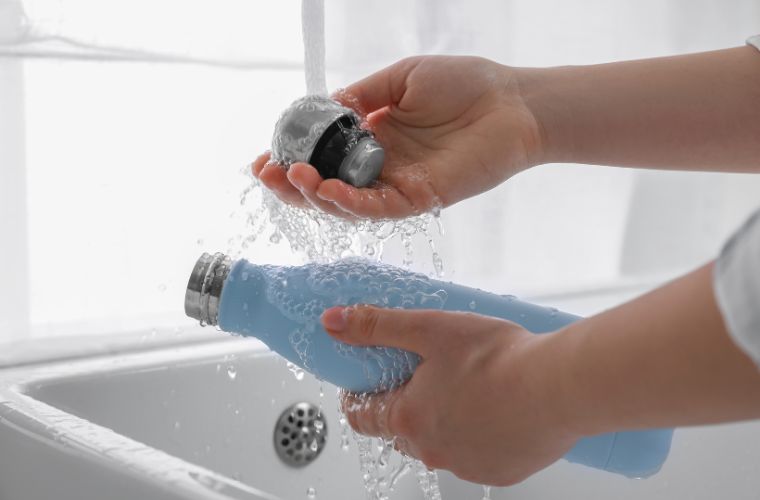Hydration Hygiene: Are You Cleaning Your Water Bottle Enough to Prevent Germs, Mold and Buildup?

Water bottles are like our loyal sidekicks, keeping us hydrated while we’re on the go, whether we’re hitting the gym, grinding through a long workday or trekking on a hike. We fill them up, take a sip and move on with our day without much thought. But when was the last time you gave your water bottle a thorough cleaning? If it’s been a while, you might be surprised at what’s lurking inside. From mold to germs, your water bottle could be a breeding ground for harmful bacteria, putting your health at risk. With a little awareness and simple hygiene habits, we can keep our water bottles sanitized and our bodies hydrated.
Daily Rinse: Make it a habit to rinse your water bottle with hot soapy water after each use. “This simple step helps flush out any lingering residue and prevents bacteria from thriving,” advised Laura Zigarevich, a certified Serve Safe professional and the food and nutrition manager at Morton Plant Hospital. “Neglecting this simple task can compromise your health and the taste of your water.”
Weekly Scrub: Give your bottle a good scrub down at least once a week. Use a bottle brush, hot water and mild dish soap to thoroughly scrub away any stubborn buildup that may have accumulated in the interior of your water bottle. Pay extra attention to the cap and mouthpiece which can be a hotspot for bacteria buildup, especially if your bottle has a spout or straw. To properly clean it, disassemble the mouthpiece if possible and soak it in warm, soapy water. Use a small brush to remove any trapped debris, and rinse thoroughly before reassembling. If your bottle has a straw, soak the straw in a mixture of water and vinegar. After soaking, use a straw brush to scrub the interior of the straw. Rinse the straw thoroughly before reassembling and refilling your bottle.
Monthly Sterilization: At least once a month, try soaking your water bottle in a mixture of equal parts water and white vinegar overnight. Vinegar’s acidic properties will help give your bottle an extra boost of freshness and remove lingering odors or stains that just won’t budge.
“After cleaning your bottle, it’s just as important to allow the bottle and its components to air dry completely before reassembly and storage. This prevents the growth of mold and mildew,” Zigarevich added. Avoid the temptation to reach for towels or paper towels to dry the inside of your bottle, as they can leave behind lint and other residue. Instead, opt for a simple yet effective method of air drying: leave the bottle uncapped and place it in a well-ventilated area.
You’ll also want to periodically inspect your water bottle for any signs of wear and tear that could harbor bacteria. Keep an eye out for cracks, scratches or discoloration that could compromise its cleanliness or integrity.
Incorporating these simple steps into your routine can keep your hydration game strong and your bottle in top-notch condition.
BayCare is here to help you on your health and wellness journey. You can find more resources from healthy recipes and videos, nutritional tips and more by visiting the Nutrition Kitchen.
